Nexus 7 (2013) - Mini Review
by Brian Klug on July 27, 2013 12:54 AM EST- Posted in
- Tablets
- Snapdragon
- Qualcomm
- Android
- Mobile
- APQ8064
- Nexus 7
- Android 4.3
Last year the Nexus 7 debuted with a Tegra 3 SoC, which for reminder consisted of a 4+1 architecture of ARM Cortex A9 CPUs, with the 4 A9s built on 40nm G, and the +1 “shadow core” A9 built on 40nm LP (TSMC’s 40 LPG process), accompanied by ULP GeForce GPU with 12 cores running at a max GPU clock of 416 MHz. The exact SoC was NVIDIA’s Tegra 3 T30L, which could run one A9 at up to 1.3 GHz and all A9s at up to 1.2 GHz.
Rather than the relatively logical upgrade path of going to NVIDIA’s Tegra 4 SoC (I’ve heard all manner of speculation about what happened there), the new Nexus 7 switches to Qualcomm’s APQ8064–1AA, a version with 4 Krait 300 CPU cores (yes, Krait 300, not 200) running at up to 1.5 GHz and Adreno 320 graphics. Rather than use a PoP and LPDDR2, this specific APQ8064 variant goes to PCDDR3L–1600 MHz instead, including 4, 4Gb discrete 1.35V SK-hynix DRAM devices off to the side (more on the opposite side of the PCB) adding up to 2 GB of RAM. Qualcomm's Snapdragon S4 Pro and Snapdragon 600 branding gets confused here, although Qualcomm is calling the APQ8064 inside the Nexus 7 (2013) S4 Pro, it's more like an underclocked or lower binned Snapdragon 600.
At this point APQ8064 is probably the most well understood SoC in recent memory (so much so that I’m pining for devices to include something different just from an academic perspective) so I’ll spare the very verbal discussion about its performance.
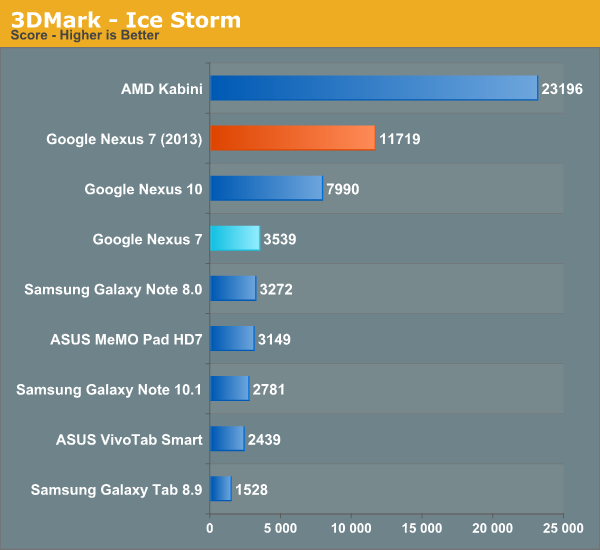



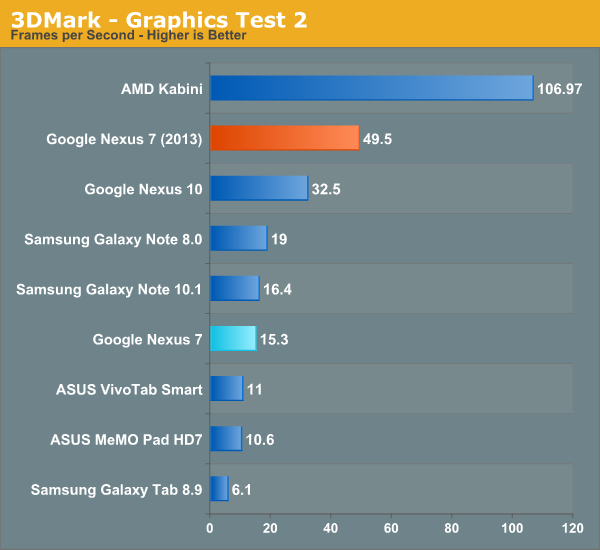
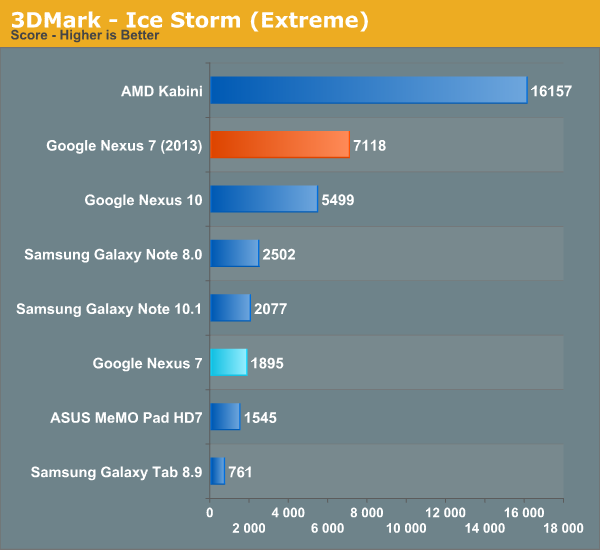

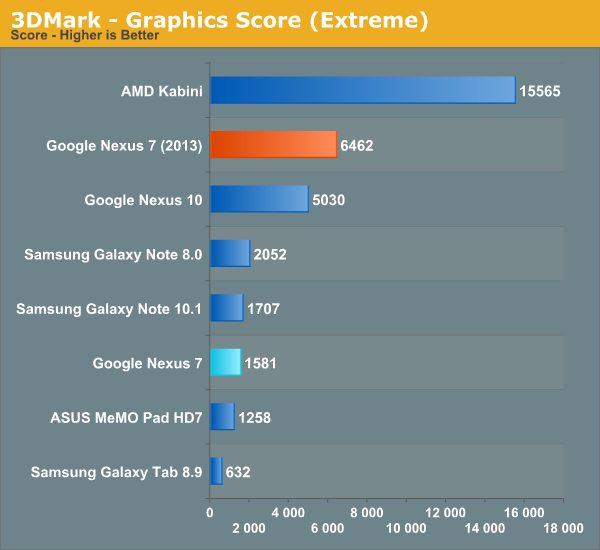

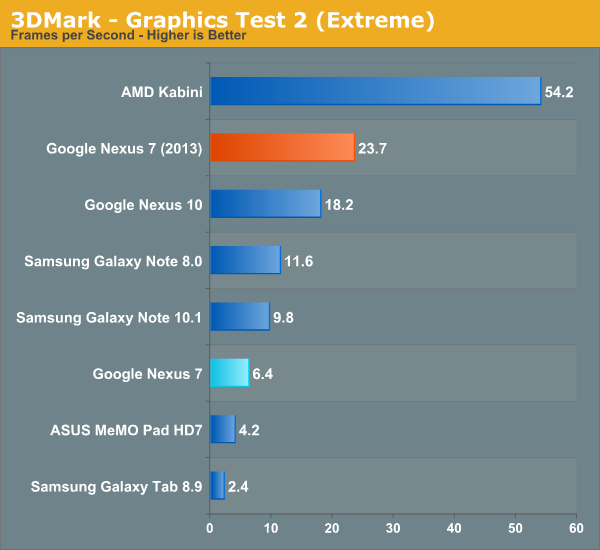


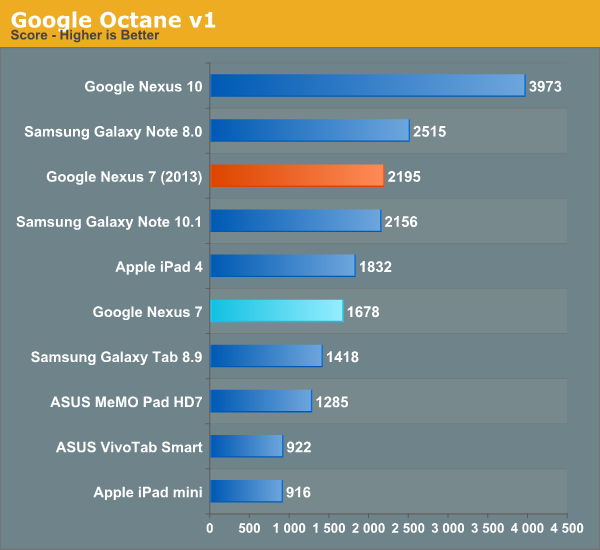
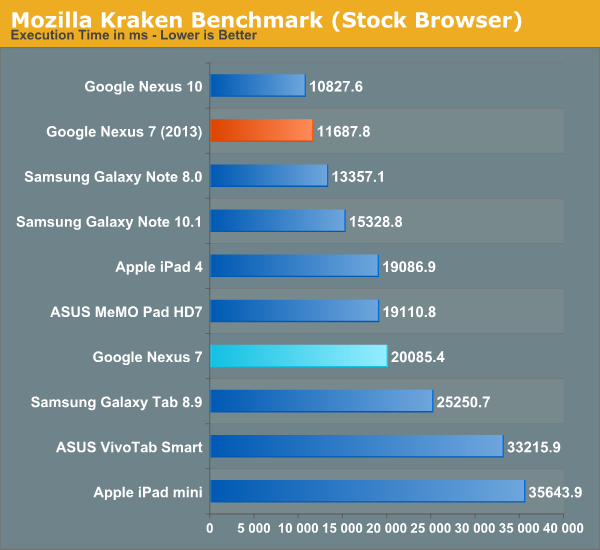
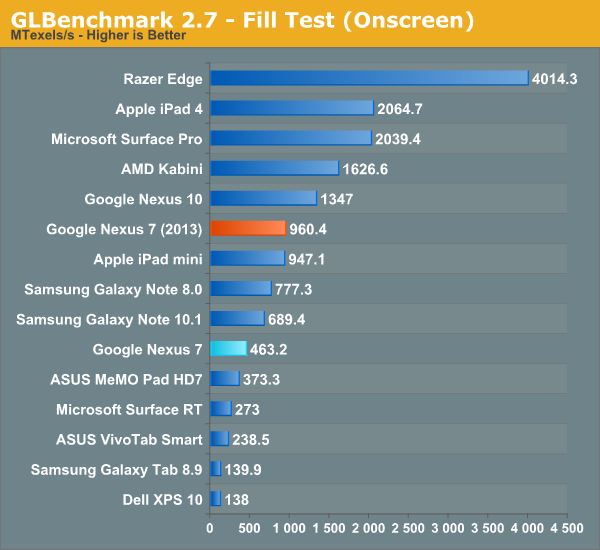
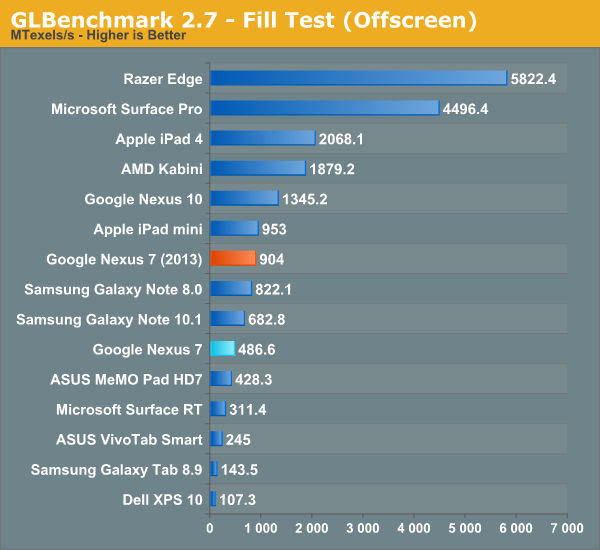
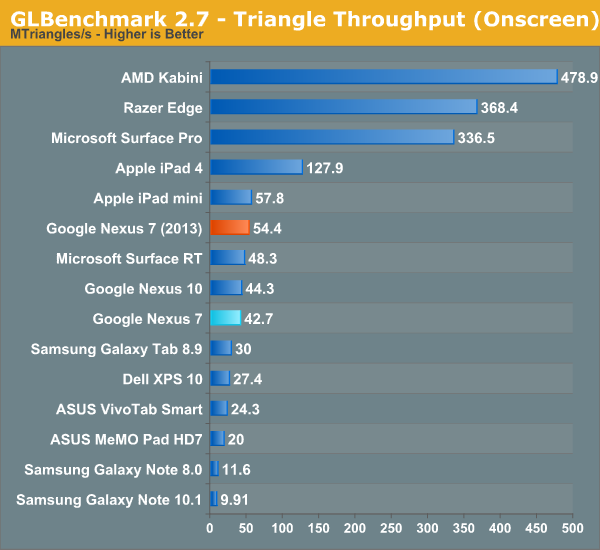
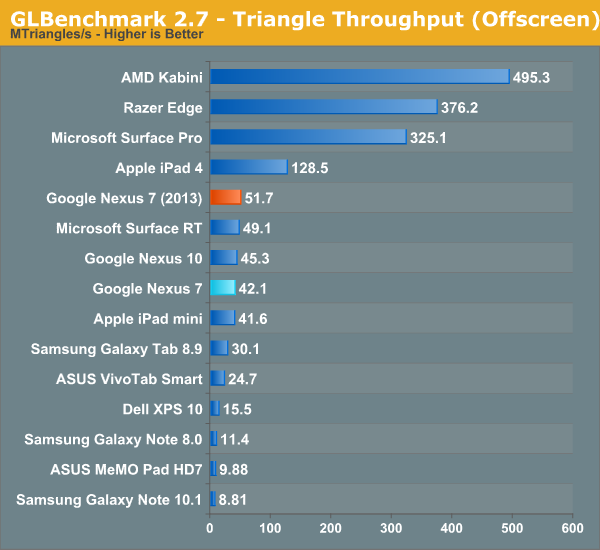
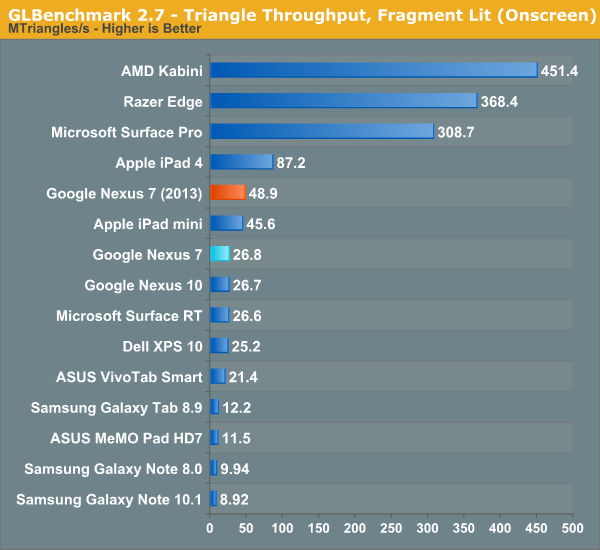
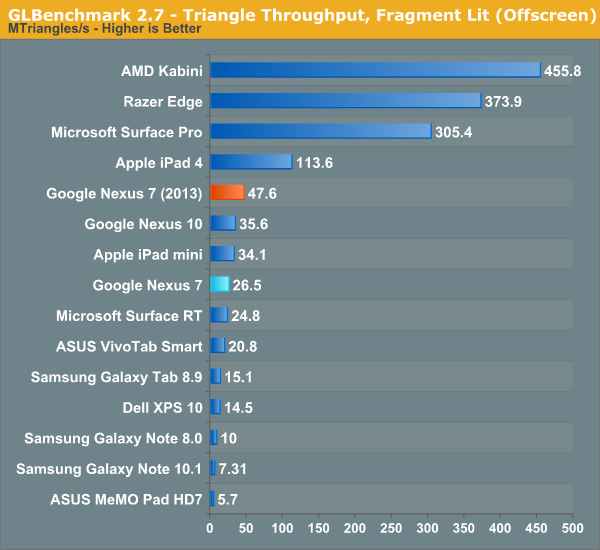
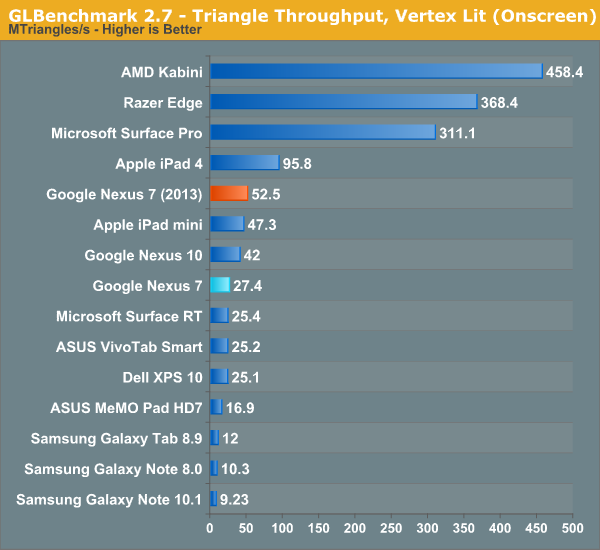
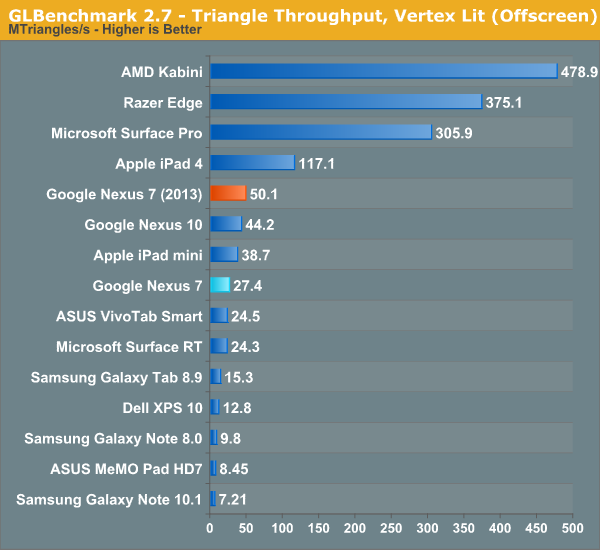

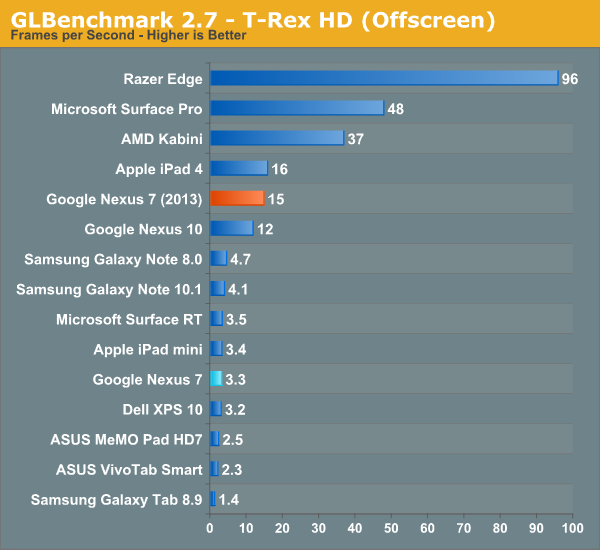
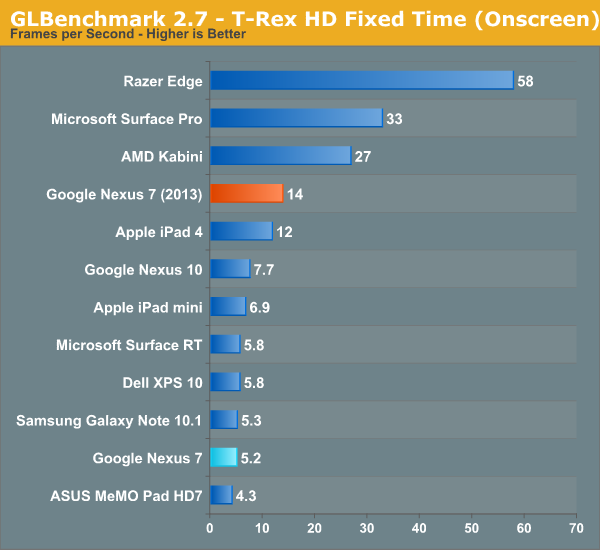
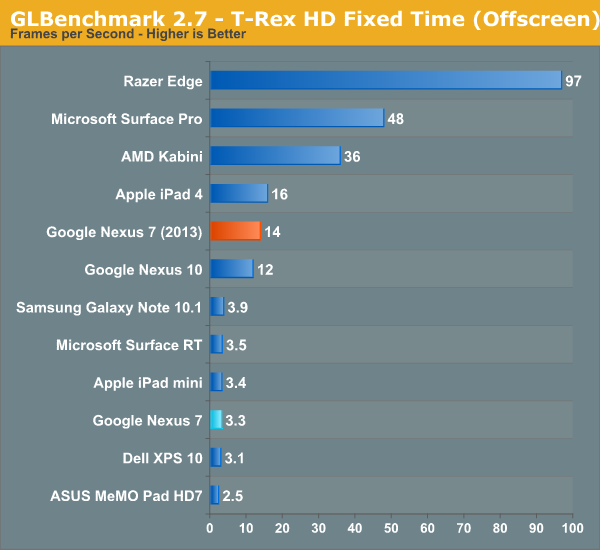
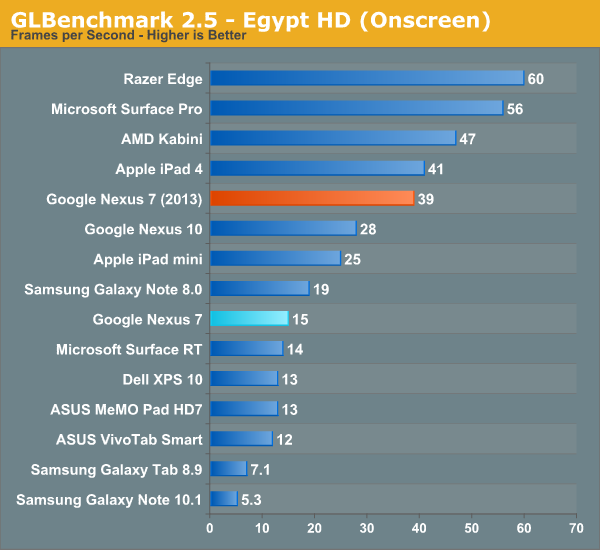
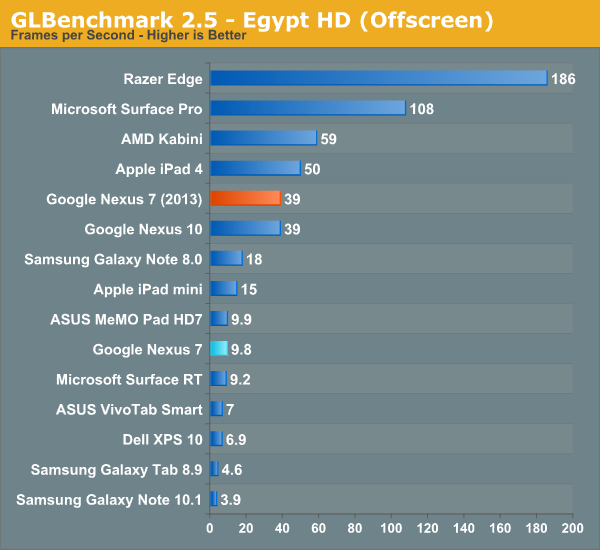
Suffice it to say, moving from 1.2–1.3 GHz Tegra 3 to 1.5 GHz APQ8064 represents a big jump forwards in performance. Google claimed 1.8x improvement on CPU performance, and 4x improvement on GPU, which gets validated pretty much consistently through the benchmarks. I never felt like Tegra 3 was a slouch by any means (performance was more I/O bound on the OG Nexus 7, which we’ll talk about in a moment), but the new Nexus 7 has ample performance for the considerable increase in screen resolution.
Dat eMMC
It wasn’t any secret with the original Nexus 7 that much of the real world performance was gated by storage I/O throughput – we wrote about it after all – and storage performance was a common complaint while multitasking on a few other previous and similar era ASUS tablets. Most of the time performance was acceptable, and for $200 you can’t complain too much about things, the issue was that further on in the life of the tablet performance began degrading somewhat notably, leading to complaints.
Obviously the first thing I did on the Nexus 7 (2013) was run Androbench with the same 100 MB settings to test and see what out of box I/O performance looks like. Things are much better with the new Nexus 7 than they were with the previous one, so at a high level all is good.
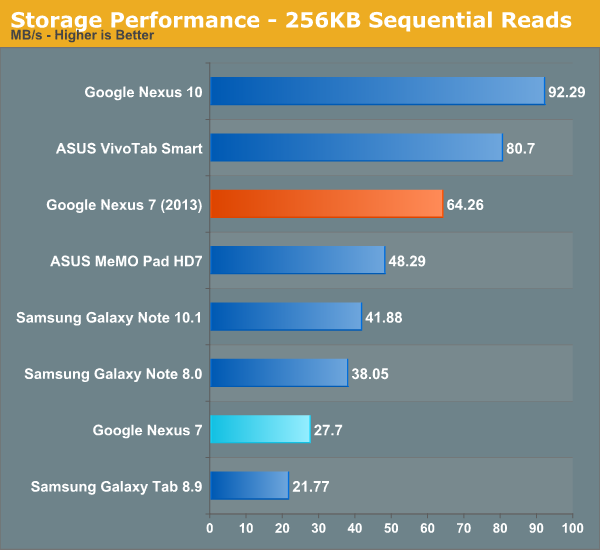
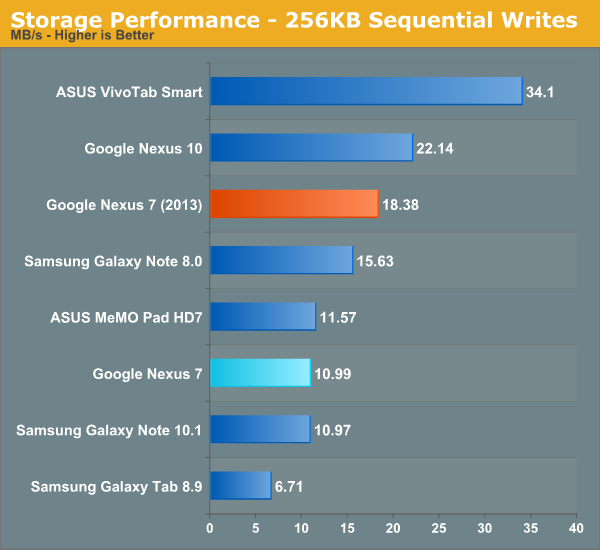
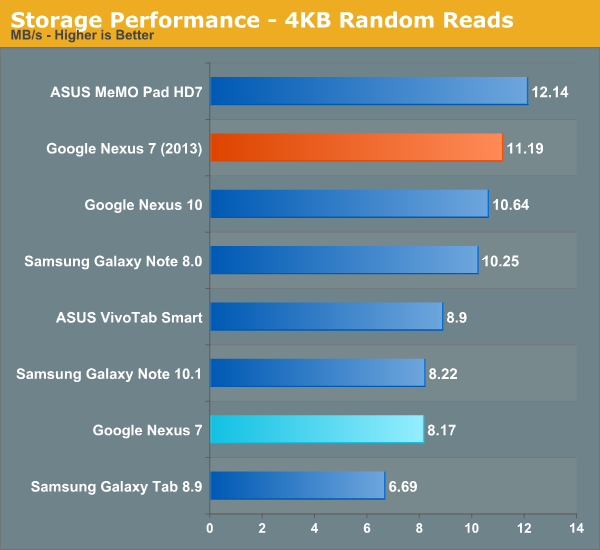

The story actually is a bit more involved however. One of the big problems was that the slowness which occurred with the prior Nexus 7 took device aging to appear – it was great for the first few months, but after you started loading it things tailed off. The new Nexus 7 (2013) with Android 4.3 includes support for fstrim, essentially idle garbage collection, which TRIMs the eMMC when a few conditions are met – the device is idle, screen off, and battery above roughly 70-percent. I’m told that TRIM support has been part of the eMMC standard since around version 4.2, it was just a matter of enabling it in software. The result is that the new Nexus 7 shouldn’t have these aging affects at all. Better yet, fstrim support has also been added to the old Nexus 7 with as of the Android 4.3 update, so if you’ve got a Nexus 7 that feels slow, I/O performance should get better after fstrim runs in the background. I'm checking on whether the other Nexus devices have also had TRIM support added. I would consider the slow storage aging problem fixed as of now, and Google took the eMMC and storage I/O performance issues with the previous Nexus 7 to heart for this version.


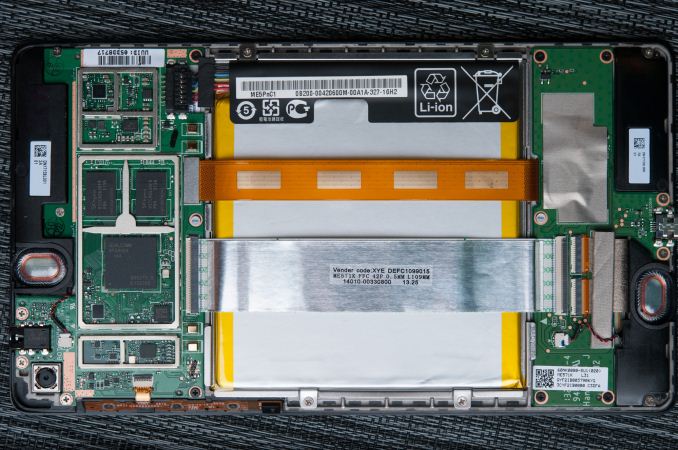
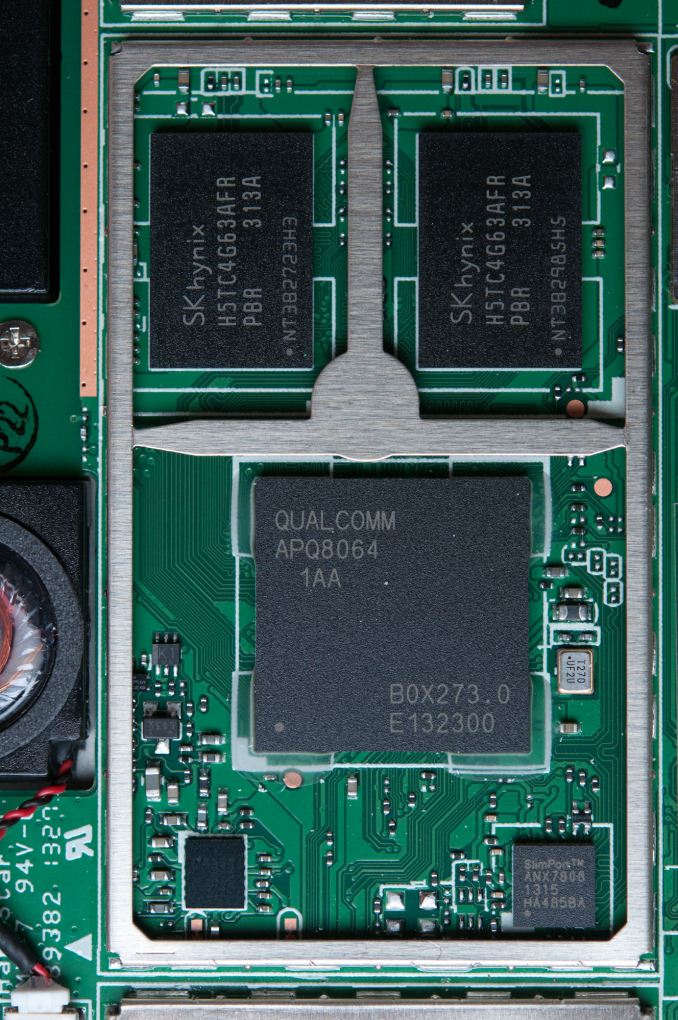














252 Comments
View All Comments
doobydoo - Thursday, August 1, 2013 - link
I guess this it what happens when you compare devices nearly a year apart...smartypnt4 - Saturday, July 27, 2013 - link
I'll have to agree with you and others here. I do much prefer the 8" size to 7" (as an aside, the 8" 16:10 seems to be the best of both worlds that I've used. Sadly only Samsung makes one of those.), but that screen would have me buying the N7 every time.I've used the iPad Mini countless times trying to convince myself the low PPI and comparatively worse color accuracy (vs. my current 4th gen iPad) wouldn't matter, but I can't sell myself on it. The screen on the mini is disgraceful in 2013. By pure numbers, it traded blows (and was often beat) by the 2012 Nexus 7, to say nothing of the 2013 N7. I can't deal with a screen like that in 2013. Not when it'd become the worst screen I use daily.
Now that the N7 is out, honestly, Apple has no excuse not to show up with a "retina" iPad mini this fall. If they do, it'll be a tough choice for me to make on which to get, but at that point, you really can't lose. If I was buying this instant, there's no competition. The Nexus 7 has too many advantages over the Mini for me. I understand if you value form factor to the exclusion of everything else, though. I've been known to do that myself on occasion.
guidryp - Saturday, July 27, 2013 - link
"Now that N7 is out", doesn't really apply, the iPad Mini design was likely set in stone 6 months ago. They can't just change their mind when someone ships something better than expected.I think we are only 50% likely to see a Retina Mini and if we do, the price will likely go up as well, so it still won't be huge competition for the N7.
smartypnt4 - Saturday, July 27, 2013 - link
My point was this: previously, it was speculated that the iPad mini in "retina" guise didn't exist Due to the technical limitations presented by trying to pack a screen like that into a chassis this small and light. Now that ASUS/Google have made it apparent that something can be performant and thin and light, while having a screen that's about on par with the iPad 4 in terms of color and contrast, no Apple apologist can claim that there are technical limitations on creating an iPad mini with an awesome screen.Unfortunately, I have a feeling that you're right on the likelihood of getting a retina mini. Then again, I was adamant that the iPad 3 wouldn't have a 2048x1536 screen, so what the hell do I know? And if it does so happen that ewe see a retina mini, I doubt it'll be in any way a competitor to the Nexus 7 due to the cost of the thing. I'd love to see it stay at $330 to keep some semblance of competition alive, but I'm starting to doubt that'll happen. Only time will tell, I suppose.
doobydoo - Thursday, August 1, 2013 - link
Well arguably they haven't done it properly - because the FPS we're seeing on all of the onscreen benchmarks it vastly inferior to that on the iPad Mini.Anyone can shove a high res screen in, but packing the power to drive that screen was the challenge, and I don't think Google (Asus) have done this.
Also - the iPad Mini was not retina because it was released nearly a year ago, technology changes.
doobydoo - Thursday, August 1, 2013 - link
I doubt they'd push the price up - they didn't when they made the iPad retina.Impulses - Sunday, July 28, 2013 - link
8" 16:10 would be my preference too, but for $230 and being a Nexus device I'll easily settle for 7". I can't stand 4:3 and I can't fathom why a ton of people seem to enjoy web browsing in landscape (even with 16:10 tablets!).Mugur - Monday, July 29, 2013 - link
... and I though I was alone. Yes, after playing with all sizes, 8" 16:10 seems to be the option I like best. But this Nexus looks so nice... :-)zhenya00 - Sunday, July 28, 2013 - link
The N7 doesn't show 1920x1200 pixels of content though. I presume that the new N7, like the old, shows some lesser number of points, probably still 960x600 points, meaning that it has less effective resolution than the mini, especially in width where you'll notice that it is often unable to show the entire width of a web page. In my opinion this is what makes the iPad so perfect for web browsing; it fits the majority of modern web pages perfectly in portrait orientation with no wasted space and no side-scrolling necessary.abazigal - Sunday, July 28, 2013 - link
I expect the ipad mini 2 to be identical to the ipad4 in terms of specs. A6x processor, 1gb of ram, 326 PPI (little reason to go higher when retina apps run well on such specs). We may see a 8mp camera, but otherwise, I don't see much differentiating it from the Nesux7 apart from ecosystem.Let's admit it. For all this comparisons, the Apple users are still going to stick with an ipad, while the Android users are going to get the Nexus7, simple because they are all too deeply invested in their ecosystem of choice to consider switching camp. You have your google play, I have my app store. I value my airplay mirroring just as you want to root your ROM.